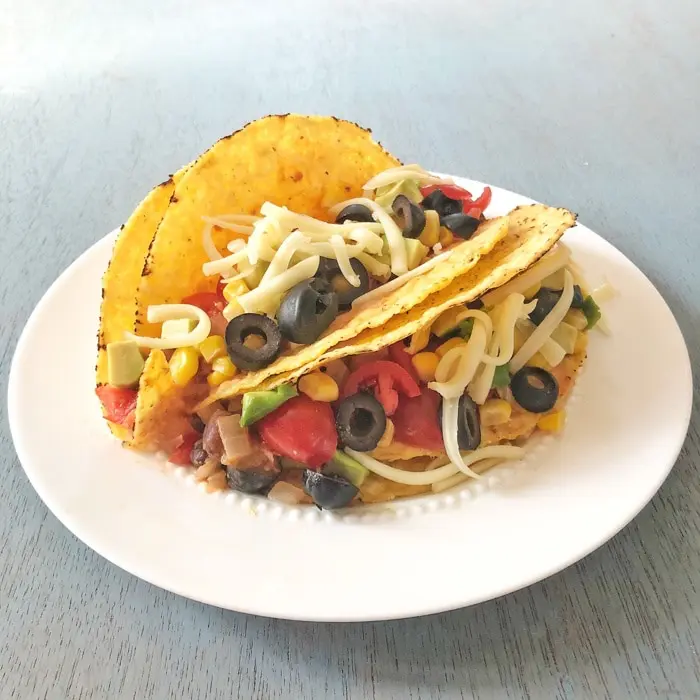This post is sponsored by Cans Get You Cooking. Thoughts and opinions are my own.
Popping in with a timely update of one of our most popular recipe posts (Sloppy Joe Tacos – a dinner I make several times a month) that I’ve turned into a vegetarian meal. Each portion features a hefty serving of veggies but with the yum factor that both sloppy joes and tacos always deliver.
#sponsored Two favorite comfort food dishes come together in this recipe for Vegetarian Sloppy Joe Tacos – a new family favorite! @cansgetyoucooking #cansforcomfort Click To TweetWhen the Cans Get You Cooking program approached me to create a recipe to support their #CansForComfort campaign, I jumped at the opportunity. Serena and I have been long-time proponents of using canned goods in our recipes, Facebook Lives and our cookbooks – they’re convenient, shelf-stable staples that make it easy to whip up nutritious and family-friendly meals. We always have our pantry stocked with Mediterranean staples like canned tomatoes, canned beans, canned olives, canned broths (and the list goes on.)
And during these times when we aren’t able to grocery shop as often, and all of our stress levels rising, we find ourselves relying on our pantry filled with canned goods more than ever.
So, with this in mind, I created these Vegetarian Sloppy Joe Tacos – mashing up two favorite comfort food dishes in a recipe that features many pantry ingredients – like canned tomato soup, canned beans, canned corn – that you probably have on hand.
And canned goods not only deliver on nutrition (DYK that kids and adults who use 6+ cans per week are more likely to have diets higher in 17 essential nutrients like potassium, calcium, and fiber?[i] [ii]), but also help with food waste – an issue that continues to be top of mind these days.
Here are some of my favorite canned food facts:
- Canned produce goes from field to package within 4 hours vs. fresh produce that takes an average of 24 hours from field to store.[iii]
- Canned foods have similar – (or at times, better!) nutritional profiles as their fresh or frozen counterparts.[iv]
- During the canning process, waste – like peels, cores and other inedible plant matter is removed and re-used as agricultural feed or compost.[v]
Check out the recipe below and for more delish #cansforcomfort recipes, visit http://cansgetyoucooking.com/
—–





